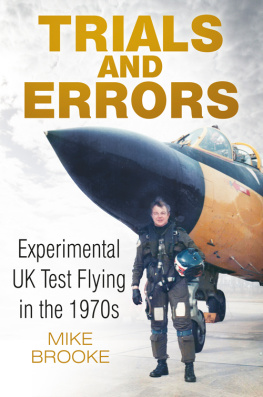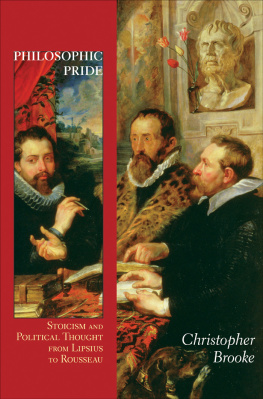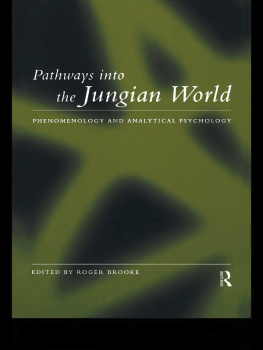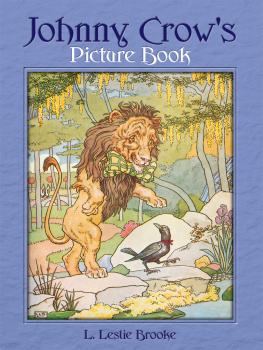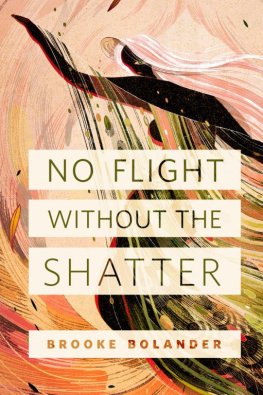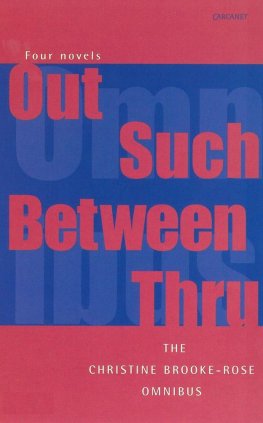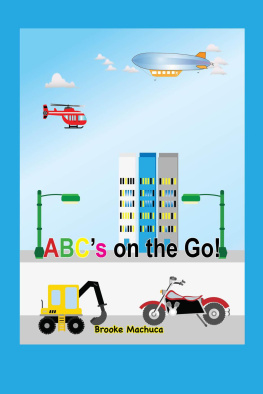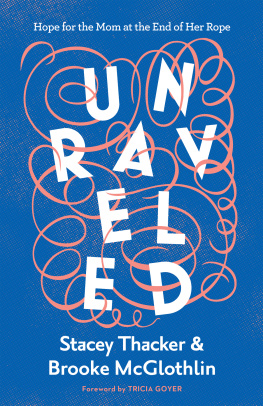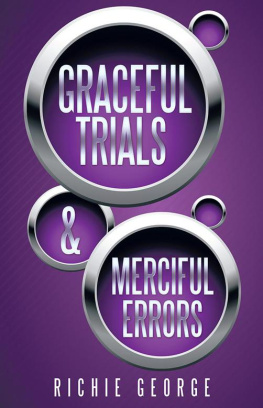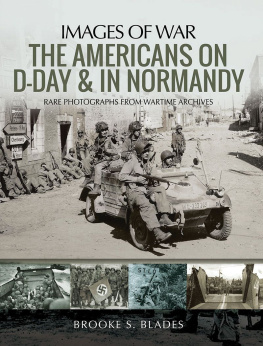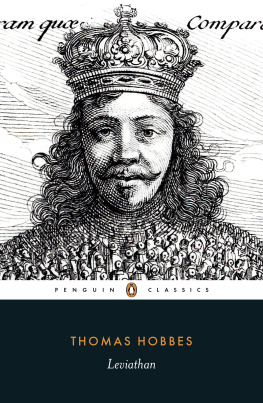Brooke - Trials and Errors
Here you can read online Brooke - Trials and Errors full text of the book (entire story) in english for free. Download pdf and epub, get meaning, cover and reviews about this ebook. year: 2015, publisher: The History Press, genre: Home and family. Description of the work, (preface) as well as reviews are available. Best literature library LitArk.com created for fans of good reading and offers a wide selection of genres:
Romance novel
Science fiction
Adventure
Detective
Science
History
Home and family
Prose
Art
Politics
Computer
Non-fiction
Religion
Business
Children
Humor
Choose a favorite category and find really read worthwhile books. Enjoy immersion in the world of imagination, feel the emotions of the characters or learn something new for yourself, make an fascinating discovery.
- Book:Trials and Errors
- Author:
- Publisher:The History Press
- Genre:
- Year:2015
- Rating:3 / 5
- Favourites:Add to favourites
- Your mark:
- 60
- 1
- 2
- 3
- 4
- 5
Trials and Errors: summary, description and annotation
We offer to read an annotation, description, summary or preface (depends on what the author of the book "Trials and Errors" wrote himself). If you haven't found the necessary information about the book — write in the comments, we will try to find it.
Trials and Errors — read online for free the complete book (whole text) full work
Below is the text of the book, divided by pages. System saving the place of the last page read, allows you to conveniently read the book "Trials and Errors" online for free, without having to search again every time where you left off. Put a bookmark, and you can go to the page where you finished reading at any time.
Font size:
Interval:
Bookmark:

To the memory of
Group Captain John W. Thorpe AFC, FRAeS, RAF

John Thorpe and I pose before my final jet flight as a pilot in an ETPS Alpha Jet in March 2004. This was also our last flight together. John is the tall one! (OGL (QinetiQ))
This book is dedicated to my good friend and fellow test pilot John Thorpe, aka JT. Although we both joined the RAF, as trainee pilots, straight from grammar schools and learnt to fly at the same Flying Training School, John was a couple of years behind me on that particular journey. It was the only time that he was behind me in anything from then on he would always be out front. However, I did not meet John until June 1973 when we travelled together from our neighbouring RAF stations in the English Midlands to Boscombe Down in Wiltshire. There we would undergo two days of rigorous examination to see whether we were fit to be selected as student test pilots with the Empire Test Pilots School (ETPS). He was at that time flying the Harrier and had been on the very first Harrier squadron. We made that journey more in hope than in expectation.
Indeed, after the two days of challenging academic tests, demanding interviews and nervous waiting we departed together with even less hope and no expectation. As we drove up the hill away from Boscombe, John put our thoughts into words:
Well, I dont know about you but I dont expect to be seeing that place again.
It was therefore with an element of shock and much surprise that we were both selected to attend the course; in the event, circumstances prevented me from joining the 1974 course, on which John was awarded the prize for Best Pilot; an indication of his outstanding mastery of the art of aviation. I attended the course the following year and John was by then a test pilot on A Squadron testing fighters and trainers. John was one of the two RAF test pilots who carried out the official Preview Assessment of the BAe Hawk trainer.
I next came across him when I joined the ETPS staff in early 1981. John helped me enormously to adjust to this new job and made sure that I was fully comfortable with everything before students were allocated to me. Throughout our time together on ETPS I never experienced anything but kind concern, calm control, good humour and exemplary and consistent professional standards from John.
Our paths crossed again, once more at Boscombe Down, in the late 1980s when he was now the CO of A Squadron and those extraordinary personal qualities came to the fore. He was an excellent leader and always set the highest standard for all in his unit, while maintaining an approachable and friendly demeanour.
John continued to serve at Boscombe Down, as Chief Test Pilot, Director of Flying and, latterly, as a civilian test flying tutor on ETPS. He ended up serving at Boscombe Down for a total of nearly twenty years; which made his remark to me in the summer of 1973 all the more ironic!
John Thorpe died, after fighting cancer, in December 2013 in Calgary, Canada, where he had made his home with his wife Jenny. He was, as they used to say in the Harrier force, a bona mate , one of the best I have known. I shall miss him.
I would also like to remember two of my friends and colleagues who lost their lives during flight test activities. The first is Flt Lt Sean Sparks, RAF, with whom I worked at Farnborough and at ETPS. Sean died when the Jaguar in which he was flying crashed into the sea off North Devon after suffering a catastrophic birdstrike. The second is Lt Cdr Keith Crawford, USN, who was a fellow tutor of mine at ETPS. Keith died while testing a McDonnell F-18 Hornet from the US Naval Flight Test Facility at Patuxent River, Maryland. Both these men were good, reliable and true friends who loved their flying.
Once more I have been unstintingly supported throughout this project by my wife, Linda. She has put up with me spending many hours with my nose in my flying logbooks, typing one-fingered, and then she proof-read every page. She has corrected and advised even more thoroughly than she did during the production of my two previous books. I cannot thank her enough. However, if you do spot any errors please dont blame her; the book stops here with me!
I also want to thank the staff of The History Press for keeping me on their books and doing such a good job of producing this volume. Thanks also go to several people who have helped, provided pictures and advice and helped me to produce something that would not have been as good without their input: John Bradley, Norman Roberson, Allan Wood, Norman Parker, Jenny Thorpe, Natasha King and the folks of the Photographic Division at QinetiQ Boscombe Down. Last, but by no means least, I want to thank Matt Savage of Mach One Manuals (www.mach-one-manuals.net) for providing the cockpit illustrations.
TEST PILOT?
To design a flying machine is nothing. To build it is not much.
But to test it is everything.
(Otto Lilienthal, Pioneer aviator, 184896)
From the very early days of flying someone has had to make the first flight of a new flying machine. Usually, in that now far off era of stick, string and cloth flying machines, it was the designer. Crashes were common but not always fatal, so giving those pioneers the chance to change things and try again. Eventually, as men became more expert at aviating, pilots would team up with designers to do the dangerous bit on their behalf, usually for some sort of remuneration. And so the role and profession of the test pilot developed.
As the aviation industry matured and aircraft companies proliferated, bold aviators, often men with a military background, were recruited to fill the posts of company test pilots. Many became famous in their, sometimes short, lifetimes. There were also skilled pilots in the armed forces who were selected to fly experimental aircraft and carry out research and development flights at the Royal Aircraft Establishment (RAE) and the Aeroplane and Armament Experimental Establishment (A&AEE), but the role of the test pilot was not formalised or standardised across the industry or within the services. However, events during the Second World War brought an end to the DIY approach to test flying.
On the day that the war was officially announced by Prime Minister Neville Chamberlain, 3 September 1939, the A&AEE upped sticks from its vulnerable east coast location of Martlesham Heath, near Ipswich, and moved west to the safer, more distant environs of Boscombe Down, on Salisbury Plain in Wiltshire. In 1942 the man in charge of clearing aircraft for service use, known as the Controller Aircraft, Air Marshal Sir Ralph Sorley, made a decision. He wrote to his fellow 1920s test pilot, Air Commodore DArcy Greig, then Commandant of A&AEE, ordering him to form a school to train pilots to become effective test pilots. So the worlds first such training establishment, the Empire Test Pilots School (ETPS), was founded, with the first course starting in April 1943. On that course were a mixture of civilian and military pilots.
With the advent of the post-war jet era the image of the test pilot, always known in the trade as the tp, became crystallised in the public mind as a dashing character who drove a sports car, flew his jet in a business suit and almost always wore a bow tie. People soon thought that these cool and daring men flew their brand new jets with bravado and a white silk scarf to hand. That image has not really gone away. How exciting! is often the response to the announcement that one is a test pilot.
Next pageFont size:
Interval:
Bookmark:
Similar books «Trials and Errors»
Look at similar books to Trials and Errors. We have selected literature similar in name and meaning in the hope of providing readers with more options to find new, interesting, not yet read works.
Discussion, reviews of the book Trials and Errors and just readers' own opinions. Leave your comments, write what you think about the work, its meaning or the main characters. Specify what exactly you liked and what you didn't like, and why you think so.

